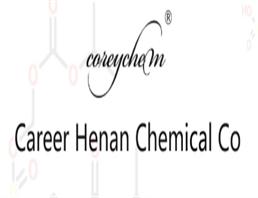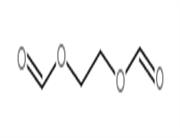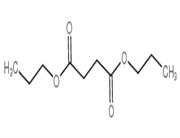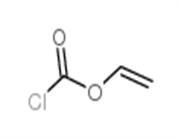1/1
Mupirocin
$ 1.00
/1KG
- Min. Order1KG
- Purity95-99%
- Cas No12650-69-0
- Supply Ability1ton
- Update time2019-12-31
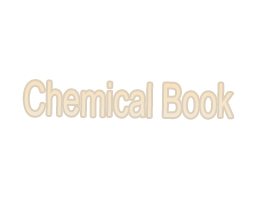
career henan chemical co
VIP7Y
 China
China
Since:2014-12-17
Address:702, Building 10, East District, National University Science and Technology Park, High tech Zone, Zh
Enterprise Verified
Business Bank account
Basic Contact Infomation
Business Address
Trade Company

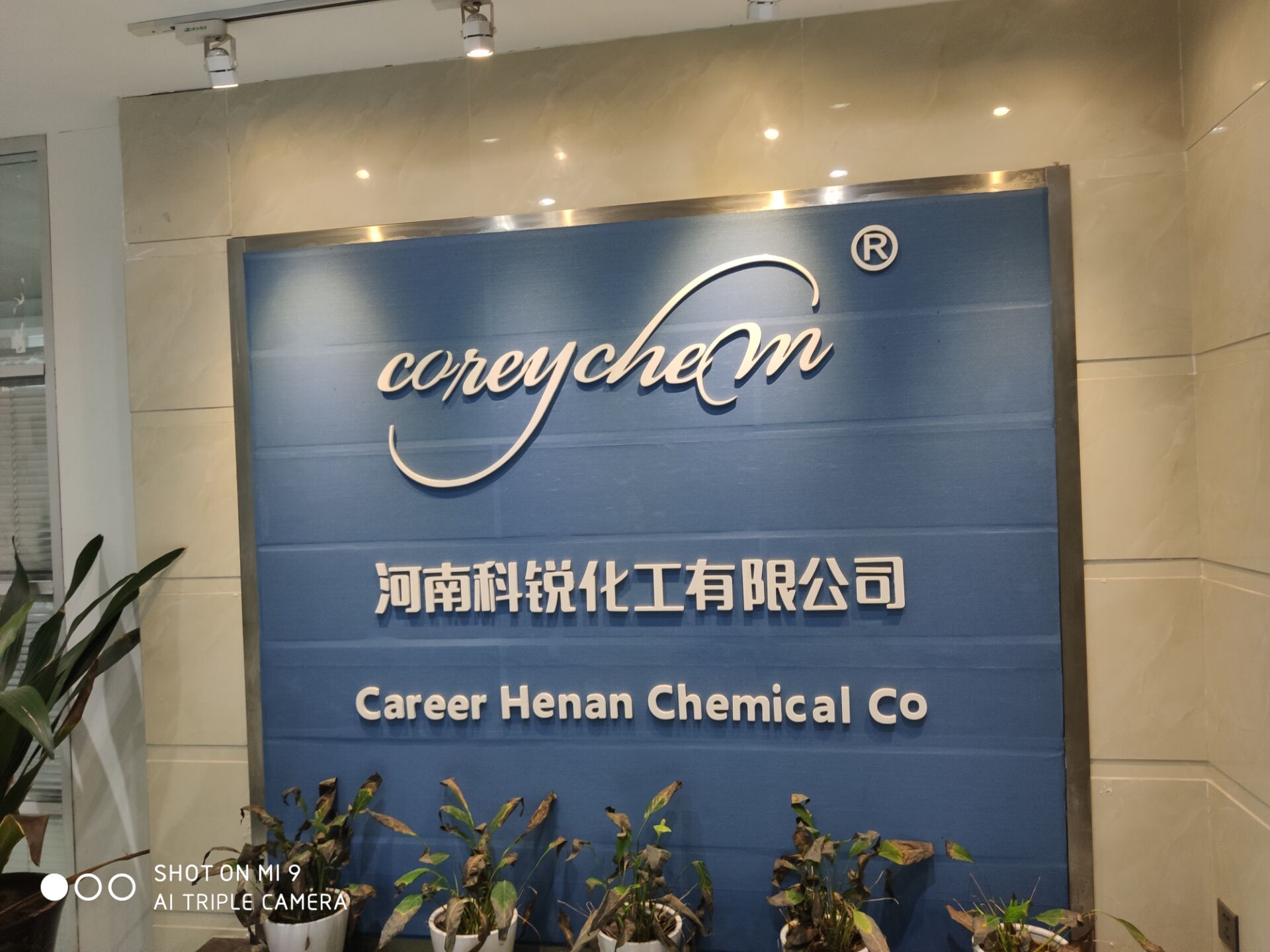

Chemical Properties
| Product Name | Mupirocin |
| CAS No | 12650-69-0 |
| EC-No | 200-158-5 |
| Min. Order | 1KG |
| Purity | 95-99% |
| Supply Ability | 1ton |
| Release date | 2019/12/31 |
▼
▲
Mupirocin Basic information
Topical antibiotics Side effects Precautions Chemical Properties Uses Production Methods
▼
▲
Product Name:
Mupirocin
Synonyms:
Mupirocin/Mupirocin Calcium;MUPIROCIN;MUPIROCIN CALCIUM;L-talo-Non-2-enonic acid, 5,9-anhydro-2,3,4,8-tetradeoxy-8-(2S,3S)-3-(1S,2S)-2-hydroxy-1-methylpropyloxiranylmethyl-3-methyl-, 8-carboxyoctyl ester, (2E)-;MUPIROCIN,USP;Bactoderm;Bactroban Ointment;L-talo-Non-2-enonic acid, 5,9-anhydro-2,3,4,8-tetradeoxy-8-[[(2S,3S)-3-[(1S,2S)-2-hydroxy-1-methylpropyl]oxiranyl]methyl]-3-methyl-, 8-carboxyoctyl ester, (2E)- (9CI)
CAS:
12650-69-0
MF:
C26H44O9
MW:
500.62
EINECS:
603-145-3
Product Categories:
-;Active Pharmaceutical Ingredients;Intermediates & Fine Chemicals;Pharmaceuticals;Chiral Reagents;Heterocycles;API;Inhibitors
Mol File:
12650-69-0.mol

▼
▲
Mupirocin Chemical Properties
▼
▲
Melting point
77-780C
alpha
D20 -19.3° (c = 1 in methanol)
Boiling point
672℃
density
1.183±0.06 g/cm3(Predicted)
Fp
>110°(230°F)
storage temp.
-20°C Freezer, Under Inert Atmosphere
solubility
H2O: 12 mg/mL, soluble
pka
4.78±0.10(Predicted)
form
solid
color
white to tan
optical activity
[α]/D -15.7 to -20°, c = 1 in methanol
Water Solubility
Soluble in DMSO or methanol. Sparingly soluble in water
λmax
222nm(EtOH)(lit.)
Merck
14,6302
InChIKey
MINDHVHHQZYEEK-HBBNESRFSA-N
CAS DataBase Reference
12650-69-0(CAS DataBase Reference)
▼
▲
Safety Information
▼
▲
WGK Germany
2
RTECS
RA6907000
HS Code
2941906000
▼
▲
MSDS Information
▼
▲
Provider
Language
5,9-Anhydro-2,3,4,8-tetradeoxy-8-[[3-(2-hydroxy-1-methylpropyl)oxiranyl]methyl]-3-methyl-[2E,8[2S,3S(1S,2S)]]-L-talonon-2-enonic acid 8-carboxyoctyl ester
English
SigmaAldrich
English
▼
▲
Mupirocin Usage And Synthesis
▼
▲
Topical antibiotics
The crude drug of Bactroban ointment produced by the well-known domestic pharmaceutical company SmithKline is mupirocin which is a new type of local topical antibiotic and a kind of metabolic substance produced in the culture solution of pseudomonas fluorescence, that is, Pseudomonas A. Mainly through reversibly combined with isoleucine transfer RNA synthetase, this product can prevent the isoleucine incorporation and terminate the protein synthesis in cells containing isoleucine, leading to bacterial death. At low concentrations, this product has the inhibitory effect and at high concentrations, it has the bactericidal effect. This product is highly sensitive to a variety of gram-positive bacteria associated with skin infections, particularly staphylococcus aureus (including drug-resistant staphylococcus aureus) and streptococcus pyogenes; and it is also available for listeria monocytogenes and erythema erysipelothrix bacteria; it is generally not sensitive to gram-negative bacteria, but have some antibacterial effect on some Gram-negative bacteria such as E. coli, neisseria, haemophilus influenzae and Neisseria gonorrhoeae and is not sensitive to the majority of anaerobic bacteria and the normal flora of the skin and has low efficacy against fungi. Rate of occurrence is very low in vitro resistant mutants. After applied into the skin, this medicine can penetrate into the stratum corneum, but the absorption rate is very low. The binding rate of this drug and human serum protein is 95%. when absorbed, it is rapidly metabolized to an inactive substance single spore acid (Monic Acid) and excreted by the kidneys. The minimum inhibitory concentration of most sensitive staphylococcus is 0.01-0.25mg/L, that of sensitive streptococcus is 0.06-0.5mg/L, and that of listeriosis is 8mg/L. This product is more effective in vitro tests under acidic conditions than that under alkaline conditions. When human serum exists, activity of this drug reduce to 1/10-1/20.
Side effects
Topical application of this drug is generally no adverse reactions, occasionally with skin burning sensation, stinging sensation, aminotransferase rising, itching, dryness and erythema. Its occurrence rate is very low(3%) with a lesser degree. The medicine is generally tolerated and without being stopped. For long-term use, this drug may result in overgrowth of non-susceptible strains; nasal agent can cause headache, taste disturbance, rhinitis, pharyngitis, and other respiratory disorders.
The above information is edited by the Chemiclbook of Bai Linlin.
The above information is edited by the Chemiclbook of Bai Linlin.
Precautions
1. Allergies of pseudomonas acid or polyethylene glycol are disabled to use; patients who suffer from moderate or severe renal impairment use it with caution; the impact on pregnant or lactating women are not clear, temporarily not available.
2. Ointments made from polyethylene glycol which is used as a substrate, is only available for a small area of skin bacterial infection, and cannot be used to extensive burns or wounds so as to prevent the renal damage due to the absorption of polyethylene glycol, as well as mucous membranes, for example, used in the eyes and noses. As with nasal staph infections, the use of ointment base should be replaced by vaseline.
3. Although mupirocin toxicity is low, we should avoid the abuse or the use of the drug for a long term in case of generating drug-resistant strains.
2. Ointments made from polyethylene glycol which is used as a substrate, is only available for a small area of skin bacterial infection, and cannot be used to extensive burns or wounds so as to prevent the renal damage due to the absorption of polyethylene glycol, as well as mucous membranes, for example, used in the eyes and noses. As with nasal staph infections, the use of ointment base should be replaced by vaseline.
3. Although mupirocin toxicity is low, we should avoid the abuse or the use of the drug for a long term in case of generating drug-resistant strains.
Chemical Properties
This medicine can be obtained from crystallized ether, and its melting point is 77~78 ℃. [α]D20-19.3°(C = 1, methanol). The maximum absorption of UV (ethanol): 222nm(ε14500).
Uses
Topical antibiotics. This product is generally used for the inflammation of the skin, eczema, etc., or made into mupirocin ointment in the market.By reversibly binding to isoleucine transfer RNA synthetase, this product can prevent isoleucine incorporated so that the synthesis of all proteins in cells containing isoleucine can be stopped.
Mupirocin has a unique mode of action. The epoxide-containing monic acid tail of the molecule is an analog of isoleucine and, as such, is a competitive inhibitor of isoleucyltRNA synthetase in bacterial cells. The corresponding mammalian enzyme is unaffected.
Mupirocin has a unique mode of action. The epoxide-containing monic acid tail of the molecule is an analog of isoleucine and, as such, is a competitive inhibitor of isoleucyltRNA synthetase in bacterial cells. The corresponding mammalian enzyme is unaffected.
Production Methods
It is a kind of substance produced by the pseudomonas fluorescence, including pseudomonic acids A, B, C, D. Mupirocin is pseudomonic acid A which is the major metabolite.
Description
Mupirocin (pseudomonic acid A) is an antibiotic produced by Pseudomonas fluorescens. It is useful in the treatment of dermal infections, especially those involving S. aureus and S. epidermidis.
Chemical Properties
White Crystalline Solid
Originator
Beecham (United Kingdom)
Uses
antibacterial, antimycoplasmal, isoleucyl-tRNA synthetase inhibitor
Uses
Mupirocin, is a major component of the pseudomonic acid, an antibiotic complex produced by Pseudomonas fluorescens NCIB 10586. Topical antibacterial.
Uses
Pseudomonic acid is a potent antibiotic produced by Pseudomonas fluorescens, reported by Fuller et al. in 1971. Pseudomonic acid has broad spectrum activity against Gram positive bacteria and was approved for topical human use in 1985. Pseudomonic acid acts as a potent and selective inhibitor of isoleucyl-tRNA synthetase.
Uses
vasodilator
Uses
An antibiotic inhibitor of isoleucyl-tRNA synthetase
Definition
ChEBI: An alpha,beta-unsaturated ester resulting from the formal condensation of the alcoholic hydroxy group of 9-hydroxynonanoic acid with the carboxy group of (2E)-4-[(2S)-tetrahydro-2 -pyran-2-yl]-3-methylbut-2-enoic acid in which the tetrahydropyranyl ring is substituted at positions 3 and 4 by hydroxy groups and at position 5 by a {(2S,3S)-3-[(2S,3S)-3-hydro ybutan-2-yl]oxiran-2-yl}methyl group. Originally isolated from the Gram-negative bacterium Pseudomonas fluorescens, it is used as a topical antibiotic for the treatment of Gram-positive bacterial infections.
Brand name
Bactroban (GlaxoSmithKline); Centany (Johnson & Johnson).
Antimicrobial activity
It is active against staphylococci and streptococci, but also Neisseria and Haemophilus spp. Enterococcus faecalis tends to be sensitive whereas E. faecium is usually resistant. Activity against Staph. aureus is affected by inoculum such that a 10-fold increase in the inoculum causes doubling of the minimum inhibitory concentration (MIC) in vitro. Activity also decreases as pH increases above the normal skin pH of 5.5.
Acquired resistance
Before the introduction of mupirocin, resistance in Staph. aureus was uncommon, with a natural mutation frequency of 1 in 109. However, shortly after the agent was introduced, mupirocin-resistant strains began to emerge. They are of two types: low level (MIC 8–256 mg/mL) and high level (MIC >256 mg/mL).
High-level resistance, in contrast, is linked to the acquisition of a transmissible resistance gene MupA that may co-transfer with other antimicrobial resistance genes. Strains that express MupA are not clinically susceptible to mupirocin.
Several studies suggest that widespread use of prophylactic mupirocin may result in increased levels of resistance. In Canada increasing use of mupirocin across the country led to high-level mupirocin resistance, rising from 1.6% to 7% over a 9-year period.
High-level resistance, in contrast, is linked to the acquisition of a transmissible resistance gene MupA that may co-transfer with other antimicrobial resistance genes. Strains that express MupA are not clinically susceptible to mupirocin.
Several studies suggest that widespread use of prophylactic mupirocin may result in increased levels of resistance. In Canada increasing use of mupirocin across the country led to high-level mupirocin resistance, rising from 1.6% to 7% over a 9-year period.
General Description
Mupirocin (pseudomonic acid A, Bactroban) is the majorcomponent of a family of structurally related antibiotics,pseudomonic acids A to D, produced by the submergedfermentation of Pseudomonas fluorescens. Although theantimicrobial properties of P. fluorescens were recordedas early as 1887, it was not until 1971 that Fuller et al.identified the metabolites responsible for this activity. Thestructure of the major and most potent metabolite,pseudomonic acid A (which represents 90%–95% of the activefraction from P. fluorescens), was later confirmed bychemical synthesis to be the 9-hydroxynonanoic acidester of monic acid.
The use of mupirocin is confined to external applications.280 Systemic administration of the antibiotic resultsin rapid hydrolysis by esterases to monic acid, which is inactivein vivo because of its inability to penetrate bacteria.Mupirocin has been used for the topical treatment ofimpetigo, eczema, and folliculitis secondarily infected bysusceptible bacteria, especially staphylococci and -hemolyticstreptococci. The spectrum of antibacterial activityof mupirocin is confined to Gram-positive and Gramnegativecocci, including staphylococci, streptococci,Neisseria spp., and M. catarrhalis. The activity of the antibioticagainst most Gram-negative and Gram-positivebacilli is generally poor, with the exception of H. influenzae.It is not effective against enterococci or anaerobicbacteria.
Mupirocin interferes with RNA synthesis and protein synthesisin susceptible bacteria. It specifically and reversiblybinds with bacterial isoleucyl tRNA synthase to preventthe incorporation of isoleucine into bacterial proteins.282High-level, plasmid-mediated mupirocin resistance in S. aureushas been attributed to the elaboration of a modifiedisoleucyl tRNA that does not bind mupirocin.283 Inherent resistancein bacilli is likely because of poor cellular penetrationof the antibiotic.
The use of mupirocin is confined to external applications.280 Systemic administration of the antibiotic resultsin rapid hydrolysis by esterases to monic acid, which is inactivein vivo because of its inability to penetrate bacteria.Mupirocin has been used for the topical treatment ofimpetigo, eczema, and folliculitis secondarily infected bysusceptible bacteria, especially staphylococci and -hemolyticstreptococci. The spectrum of antibacterial activityof mupirocin is confined to Gram-positive and Gramnegativecocci, including staphylococci, streptococci,Neisseria spp., and M. catarrhalis. The activity of the antibioticagainst most Gram-negative and Gram-positivebacilli is generally poor, with the exception of H. influenzae.It is not effective against enterococci or anaerobicbacteria.
Mupirocin interferes with RNA synthesis and protein synthesisin susceptible bacteria. It specifically and reversiblybinds with bacterial isoleucyl tRNA synthase to preventthe incorporation of isoleucine into bacterial proteins.282High-level, plasmid-mediated mupirocin resistance in S. aureushas been attributed to the elaboration of a modifiedisoleucyl tRNA that does not bind mupirocin.283 Inherent resistancein bacilli is likely because of poor cellular penetrationof the antibiotic.
Pharmaceutical Applications
Mupirocin is an antimicrobial substance originally derived from Pseudomonas fluorescens. It is a mixture of pseudomonic acids with more than 90% of the commercial product being pseudomonic acid A.
It has activity predominantly against Gram-positive bacteria and its main use is as a topical agent for the eradication of carriage of methicillin-resistant Staphylococcus aureus (MRSA). It is also used as a topical treatment for superficial skin infections caused by Grampositive organisms such as impetigo.
It has activity predominantly against Gram-positive bacteria and its main use is as a topical agent for the eradication of carriage of methicillin-resistant Staphylococcus aureus (MRSA). It is also used as a topical treatment for superficial skin infections caused by Grampositive organisms such as impetigo.
Pharmacokinetics
Following parenteral administration, mupirocin is rapidly destroyed by non-specific esterases (possibly in renal or liver tissues since it is reasonably stable in blood) to inactive monic acid and its conjugates. It is strongly protein bound. About 0.25% is absorbed from intact skin. The skin ointment, but not the cream, contains polyethylene glycol, which may be absorbed significantly when applied to open wounds or damaged skin, including burns.
Clinical Use
Mupirocin is mainly used as a nasal cream as part of the regimen to decolonize patients who have been found to carry methicillin-resistant Staph. aureus. It can also be applied to tracheostomy, gastrostomy and other sites that are frequently colonized with MRSA.
The use of mupirocin as a means of controlling outbreaks of infection due to MRSA appears to be of only marginal benefit in an endemic situation.
A Cochrane Review of nine randomized controlled trials of use of mupirocin to prevent subsequent Staph. aureus infections in nasal carriers of the organism found a statistically significant reduction in such infections at any site. A small study of local therapy to reduce the risk of peritonitis in patients on continuous ambulatory peritoneal dialysis (CAPD) found that mupirocin applied three times weekly to the dialysis catheter exit site resulted in a 92% reduction in the rate of peritonitis
The use of mupirocin as a means of controlling outbreaks of infection due to MRSA appears to be of only marginal benefit in an endemic situation.
A Cochrane Review of nine randomized controlled trials of use of mupirocin to prevent subsequent Staph. aureus infections in nasal carriers of the organism found a statistically significant reduction in such infections at any site. A small study of local therapy to reduce the risk of peritonitis in patients on continuous ambulatory peritoneal dialysis (CAPD) found that mupirocin applied three times weekly to the dialysis catheter exit site resulted in a 92% reduction in the rate of peritonitis
Side effects
Topical applications are well tolerated. Conjunctival application is contraindicated as it may cause irritation. Minor side effects such as irritation and unpleasant or abnormal taste have been recorded for very few patients following nasal application.
Polyethylene glycol from the ointment base may, if absorbed from application to open wounds or damaged skin, cause renal toxicity.
Polyethylene glycol from the ointment base may, if absorbed from application to open wounds or damaged skin, cause renal toxicity.
Veterinary Drugs and Treatments
Mupirocin is approved for treating topical infections in dogs caused by susceptible strains of Staphylococcal aureus or Staphylococcal intermedius. It may also be of use in other species and conditions (e.g., feline acne, equine pyoderma, superficial pyoderma, interdigital abscesses, pressure point pyodermas, etc). It also shows activity against other gram-positive pathogens: Corynebacterium sp, Clostridium sp and Actinomyces spp.
Mupirocin is not related structurally to other commercially available antibiotics and acts by inhibiting bacterial protein synthesis by binding to bacterial isoleucyl transfer-RNA sythetase. Its principle activity is against Gram-positive cocci (Staphylococcal spp. and Streptococcal spp.), including beta-lactamase producing and methicillin-resistant strains. While bacterial resistance is rare, resistant strains of Staphylococcal aureus have been identified and resistance transference is thought to be plasmid-mediated. Cross-resistance with other antimicrobials has not been identified. Mupirocin also has activity against some Gram-negative bacteria, but is not used clinically for infections caused by those bacteria.
Mupirocin is not significantly absorbed through the skin into the systemic circulation, but does penetrate well into granulomatous deep pyoderma lesions and is not suitable for application to burns.
Mupirocin is not related structurally to other commercially available antibiotics and acts by inhibiting bacterial protein synthesis by binding to bacterial isoleucyl transfer-RNA sythetase. Its principle activity is against Gram-positive cocci (Staphylococcal spp. and Streptococcal spp.), including beta-lactamase producing and methicillin-resistant strains. While bacterial resistance is rare, resistant strains of Staphylococcal aureus have been identified and resistance transference is thought to be plasmid-mediated. Cross-resistance with other antimicrobials has not been identified. Mupirocin also has activity against some Gram-negative bacteria, but is not used clinically for infections caused by those bacteria.
Mupirocin is not significantly absorbed through the skin into the systemic circulation, but does penetrate well into granulomatous deep pyoderma lesions and is not suitable for application to burns.
Company Profile Introduction
Established in 2014,Career Henan Chemical Co. is a manufacturerspecializing in the sale of fine chemicals. Mainly deals in the sales of: Pharmaceutical intermediates OLED intermediates: Pharmaceutical intermediates; OLED intermediates;
